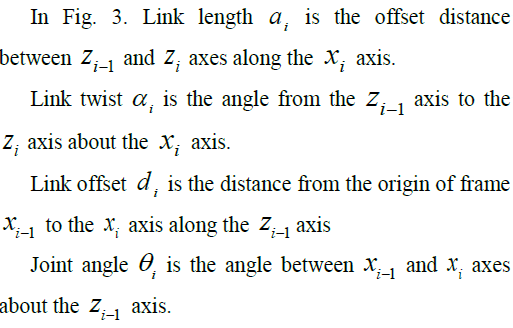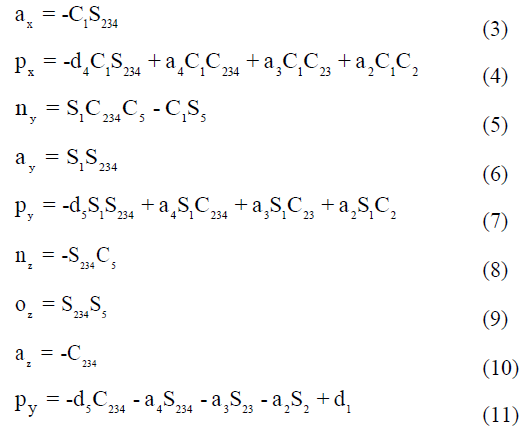ISSN ONLINE(2319-8753)PRINT(2347-6710)
ISSN ONLINE(2319-8753)PRINT(2347-6710)
| P.Prabhu1, M.Ramkumar2, S.Pradhap3, S.Navin4 1,2PG scholar, Dept. of ECE, Bannari Amman Institute of Technology, Tamil Nadu, India 3,4PG scholar, Dept. of ECE, K.Ramakrishnan College of Engineering, Trichy, Tamil Nadu, India |
| Related article at Pubmed, Scholar Google |
Visit for more related articles at International Journal of Innovative Research in Science, Engineering and Technology
Compact microstrip fed dual band printed rectangular patch antenna for WLAN/WiMAX applications presented ,The proposed dual band antenna consist of rectangular patch and dipole arms ,tuning the geometry of the proposed antenna operate at two different frequencies ,such as 2.4GHz with -24 dB return loss and 3.2 GHz with -14 dBi return loss .The antenna consist of a printed rectangular patch with microstrip feeding structure. In this proposed antenna achieves the radiation pattern omnidirectional ,fairly omnidirectional and broad bandwidth ,the simulated results of the proposed antenna prototype provided .
Keywords |
||||||||||||
| microstrip feed ;rectangular patch; omnidirctional; WiMAX; WLAN; return loss | ||||||||||||
INTRODUCTION |
||||||||||||
| The recent years tremendous development in dual band antennas for WLAN /WiMAX wireless communications systems ,printed dipole antennas very popular for these wireless communication applications because of low expensive and design simplicity ,In this popular design suitable for the various IEEE standards such as IEEE 802.11 in the WLAN at 2.4 GHz (2.4 GHZ -2.5 GHz ) and IEEE 802.16 WiMAX at 3.17 GHz to 4.2 GHZ bands[1] Hence, the antenna need to operate at dual band for WLAN and WIMAX systems [2],the rectangular patch antennas has some features which is broad bandwidth ,low profile and simple impedance matching with the microsrtip feed line[6] .we introduced printed dipole antenna for above mentioned features [4].such a printed rectangular patch antennas designed for mobile systems, laptop applications . | ||||||||||||
| In order achieves dual broad band rectangular patch antenna with 50 ohm microstrip feed line[5].the available structures achieves dual frequency band with sufficient broad bandwidth to covers the 3.17 GHz to 4.1GHz [10] for the WiMAX applications ,we introduce the new structures with 50 ohm mictsrip feed line rectangular patch slot antenna WLAN and WiMAX applications ,in this antenna operate dual frequency bands at 2.4 GHz and 3.2 GHz . The proposed antenna radiates in omnidirectional radiation pattern .This paper provide the also provide the detailed geometry of the antenna and simulated results. | ||||||||||||
II. ANTENNA CONFIGURATION |
||||||||||||
| Fig .1 shows the microstrip antenna feed printed rectangular patch antenna for WIMAX and WLAN applications. In this antenna configuration helps to achieve the dual band operation for WLAN/WIMAX applications. The proposed antenna printed on Rogers_R003 dielectric substrate, dielectric constant 3.48 with thickness 2.6mm.The proposed geometry achieves the upper resonant frequency 3.2 GHz and lower resonant frequency 2.4Ghz. the slot length increasing the impedance and bandwidth also increased in simulated results of the proposed antenna. | ||||||||||||
| The antenna simulated by using the ADS simulator method of momentum .The ground plane geometry also affect the operating bandwidth, upper and lower frequency bands .when the increase and decrease of L and W of the ground plane the operating frequency also increased. In this ground plane can be calculated by using the below equation ground length and width. | ||||||||||||
| Width of the ground plane is calculated by using this equation | ||||||||||||
 |
||||||||||||
| Length of the ground plane designed by using this equation given by | ||||||||||||
 |
||||||||||||
| Where, | ||||||||||||
| Effective dielectric of the patch antenna is given below, | ||||||||||||
 |
||||||||||||
| The resonant frequencies 2.4 GHz and 3.2 GHz achieves perfect impedance matching using microstrip feed line with 50Ω. | ||||||||||||
| To find resonant frequency of the rectangular patch antenna is calculated by following equations | ||||||||||||
 |
||||||||||||
| The resonant frequencies 2.4 GHz and 3.2 GHz can achieved by using following dimensions the length of the antenna is 40*33,length of the antenna is L1=21mm,L2=5mm,L3=16mm, width of the antenna is W1=29mm,W2=10.5mm,W3=12mm,W4=18mm,W5=5mm,length of the feed line is length is 20mm and width is Ws=0.8mm,Gr=0.5mm,Gf=3mm and length of the lot is W2=10.5mm,slot is 8 mm, Wg=2mm and Gp=3mm. correctly tune the L,W,H proposed antenna can operate at dual band frequency, The total dimensions of proposed antenna is ideal for WIMAX/WIFI applications, These dimensions can be calculated by using the following equations | ||||||||||||
| Effective length of the patch antenna is given below, | ||||||||||||
 |
||||||||||||
| To calculate the width of the antenna is given below | ||||||||||||
 |
||||||||||||
| Length rectangular patch antenna is | ||||||||||||
 |
||||||||||||
| Where, length extension of the patch antenna | ||||||||||||
 |
||||||||||||
| h- Thickness of the substrate. | ||||||||||||
| Actual patch length designed by using this equation below | ||||||||||||
 |
||||||||||||
| Properly tuning the geometry of the proposed antenna could achieve broad bandwidth for the WIMAX and WIFI applications. | ||||||||||||
III. RESULTS AND DISCUSSIONS |
||||||||||||
| The proposed antenna simulated return loss S11 shown in figure 2. The microstrip fed can change the impedance bandwidth of printed rectangular patch for operating dual bands. By using the above denoted geometry the rectangular patch antenna working at the dual band for WLAN (2.4GHz) and WIMAX (3.2GHz). The return loss simulated by the ADS MOM technology, which is operating at the resonant frequencies 2.4GHz lower band at -25dB and 3.2GHz upper band at -14dB return loss with bandwidth microstrip feed line using for excitation for antenna. | ||||||||||||
| Figure .3(a) and Fig.3(b) represents the simulated surface current distribution of the proposed antenna at working frequencies 2.4GHz and 3.2GHz. The simulated results are validating the theoretical design of the proposed antenna. In order to resonant frequencies of the proposed antenna occurs by changing the size of the slot, the impedance matching aligned by the micro strip feed line. | ||||||||||||
| The proposed antenna polarization in the two resonant frequencies are vertical direction .The simulated radiation pattern E – plane, E- cross and H- plane are shown in fig.4.Simulated radiation patterns behave quite similar to the printed rectangular patch antenna. The E plane radiation for omnidirectional in the upper band and the E plane radiation pattern in 2.4GHz omnidirectional radiation pattern. | ||||||||||||
| In this proposed antenna maximum gain is 4dBi in the E plane, similarly the maximum gain for the H plane at 2.4 GHz is 3.96 dBi shown in fig5. The gain is 4 dBi and 3.8 dBi for E plane and H plane respectively at 3.2 GHz frequency. The proposed antenna gain variation between upper band and lower band below 1dBi.shown in fig.6.The simulated radiation characteristics results which has returns high gain and the efficiency of the proposed antenna is 86%. The simulated radiation characteristics indicate proposed antenna applicable for WIMAX/WLAN applications. | ||||||||||||
IV. CONCLUSION |
||||||||||||
| A new simple microstrip dual band rectangular patch printed antenna simulated for WLAN /WiMAX applications ,the proposed antenna printed on the Rogers _Ro4003 substrate board .In this proposed sufficiently covers 2.4 GHz for WLAN and 3.2 GHz for WiMAX bands with gain 4.2 dBi and 4.0 dBi for 2.4GHz and 3.2 GHz respectively ,The proposed antenna achieved impedance matching by tuning the geometry of the antenna ,simulated results clearly shown shown proposed antenna suitable for WLAN and WiMAX applications . | ||||||||||||
Figures at a glance |
||||||||||||
|
||||||||||||
References |
||||||||||||
|